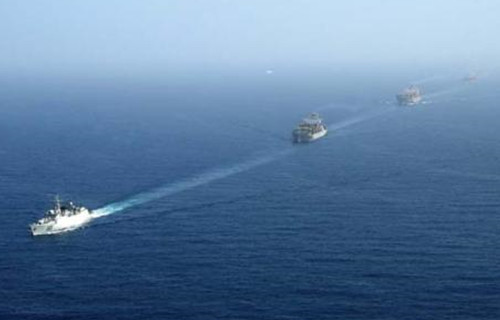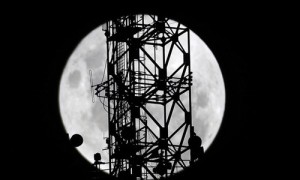印度洋和中国南海上空闪电频率增加的区域呈细线状。这是为什么呢?

When lightning sparks across the sky, it sends out low-frequency radio waves that researchers can use to determine its location.
当闪电划过天空,会释放出低频无线电波,研究人员可利用这种电波确定闪电的位置。
Recently, scientists were looking over a map of lightning activity, when they noticed something strange: narrow lines of increased lightning frequency stretching across the Indian Ocean and the South China Sea. Straight features like these are rare on a spherical, spinning planet, except where humans are up to something. In this case, sending ships across the sea.
最近,科学家在查看闪电活动图时注意到了一些奇怪的事情:印度洋和中国南海上空闪电频率增加的区域呈细线状。这些线型特征在球形旋转星球上非常罕见,除非人类在那里做了什么。这种情况是因为有船只在海上航行。
“I had pretty immediately in my mind postulated that this was a result of the pollution from ship exhaust influencing the way the storms develop.” Joel Thornton, an atmospheric chemist at the University of Washington.
“我立刻想到了船舶废气污染影响了风暴发展这一假设。”华盛顿大学的大气化学家乔尔·桑顿是说到。
“That hypothesis had already been put out generally in the field more than a decade ago. But we had been lacking clear evidence that this was happening on a large-scale, long-time horizon.”
“这种设想在十多年前就在该领域被广泛提出。但是,我们一直缺乏明确的证据,证明这种情况在大规模且长时间的发生。”
The new maps changed that. Thornton and his team found that, on average, lightning activity almost doubled over shipping lanes compared to adjacent areas of the ocean.
而新地图改变了这种状况。桑顿和团队发现,平均而言,船线上空闪电活动的频率几乎是其邻近海域的两倍。
The researchers ruled out natural explanations for the pattern, and concluded it must be related to ship exhaust. Exhaust increases the number of tiny particles in the air, on which water vapor condenses to form cloud droplets. Spreading the same amount of water over more particles leads to smaller droplets, which get lifted by updrafts until they reach altitudes cold enough for them to freeze. For reasons scientists still don’t fully understand, interactions between these ice particles and water droplets inside the cloud builds up electrical charges—and produce lightning.
研究人员排除了对这种现象的自然解释,然后推断出这一定与船舶废气有关。废气使空气中微粒的数量增加,而水蒸气则在微粒上凝结成云滴。等量的水接触到更多微粒会形成更小的云滴,上升气流送这些云滴不断升高,直到它们遇冷结冰。科学家至今尚不能完全理解,为何云中的冰粒子和水滴会相互作用形成电荷,进而产生闪电。
Thornton says the ship tracks provide a unique opportunity to isolate the effects of pollution from all the other factors normally at play in storms.
桑顿表示,船舶尾迹提供了一个难得的机会,让污染效果从作用于风暴的其他常见因素中分离。
“From a science standpoint it’s exciting that we have this ongoing experiment where we know roughly how much particle pollution is being put into the atmosphere, we have a good signature that it’s influencing the nature of storms, and then we can use this experiment as a way to improve our understanding of how pollution affects the development of storms and their intensity.”
“从科学的观点来看,令人兴奋的是,我们有这种持续进行的实验,让我们得以粗略了解有多少微粒污染进入到大气中,这使我们得以清楚了解微粒会影响风暴的特质,然后我们就可以利用这一实验来更好地理解污染如何影响风暴的发展和强度。”
The research was published in the journal Geophysical Research Letters.
这项研究结果发表在《地球物理学研究快报》上。
The International Maritime Organization recently adopted a rule that will force ships to start using fuels with lower sulfur content. That change will help reduce particle pollution—and should provide Thornton with new data.
国际海事组织最近通过了一项规定,要求船只开始使用含硫量较低的燃料。这种改变将有助于减少微粒污染,而这也应该会为桑顿提供新数据。







